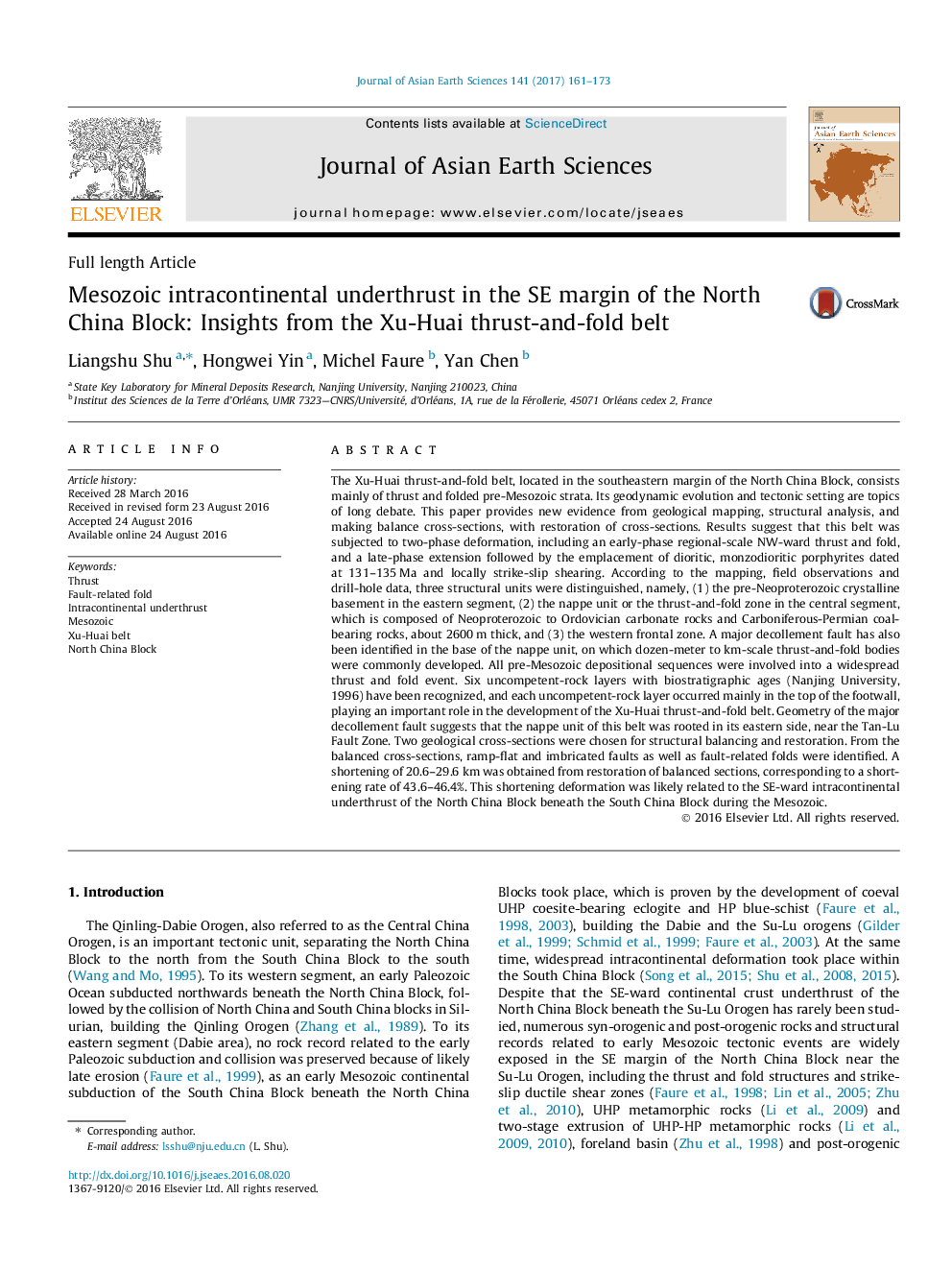| کد مقاله | کد نشریه | سال انتشار | مقاله انگلیسی | نسخه تمام متن |
|---|---|---|---|---|
| 5785839 | 1414087 | 2017 | 13 صفحه PDF | دانلود رایگان |

- The fault-related folds and step-type thrust faults are predominant features of the Xu-Huai thrust-and-fold belt.
- Two geological cross-sections were used for structural balancing and restoration.
- A shortening rate of 43-46% was obtained from the restoration of two balanced cross-sections.
- The Xu-Huai belt was derived from the Early Mesozoic crustal underthrusting of the SE margin of NCB beneath the SCB.
The Xu-Huai thrust-and-fold belt, located in the southeastern margin of the North China Block, consists mainly of thrust and folded pre-Mesozoic strata. Its geodynamic evolution and tectonic setting are topics of long debate. This paper provides new evidence from geological mapping, structural analysis, and making balance cross-sections, with restoration of cross-sections. Results suggest that this belt was subjected to two-phase deformation, including an early-phase regional-scale NW-ward thrust and fold, and a late-phase extension followed by the emplacement of dioritic, monzodioritic porphyrites dated at 131-135Â Ma and locally strike-slip shearing. According to the mapping, field observations and drill-hole data, three structural units were distinguished, namely, (1) the pre-Neoproterozoic crystalline basement in the eastern segment, (2) the nappe unit or the thrust-and-fold zone in the central segment, which is composed of Neoproterozoic to Ordovician carbonate rocks and Carboniferous-Permian coal-bearing rocks, about 2600Â m thick, and (3) the western frontal zone. A major decollement fault has also been identified in the base of the nappe unit, on which dozen-meter to km-scale thrust-and-fold bodies were commonly developed. All pre-Mesozoic depositional sequences were involved into a widespread thrust and fold event. Six uncompetent-rock layers with biostratigraphic ages (Nanjing University, 1996) have been recognized, and each uncompetent-rock layer occurred mainly in the top of the footwall, playing an important role in the development of the Xu-Huai thrust-and-fold belt. Geometry of the major decollement fault suggests that the nappe unit of this belt was rooted in its eastern side, near the Tan-Lu Fault Zone. Two geological cross-sections were chosen for structural balancing and restoration. From the balanced cross-sections, ramp-flat and imbricated faults as well as fault-related folds were identified. A shortening of 20.6-29.6Â km was obtained from restoration of balanced sections, corresponding to a shortening rate of 43.6-46.4%. This shortening deformation was likely related to the SE-ward intracontinental underthrust of the North China Block beneath the South China Block during the Mesozoic.
247
Journal: Journal of Asian Earth Sciences - Volume 141, Part A, 15 June 2017, Pages 161-173